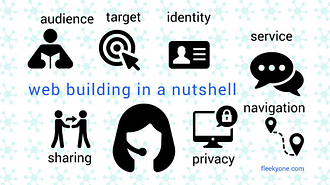
Best practices to ensure a safe website
Here are some best practices to ensure a safe website:
Keep Software and Plugins Updated
Regularly update your website’s content management system (CMS), plugins, themes, and other software to patch any security vulnerabilities. Outdated software can be targeted by attackers, so staying up to date is crucial.
Use Strong and Unique Passwords
Enforce strong password policies for user accounts on your website, including a combination of letters, numbers, and special characters. Encourage users to use unique passwords and implement multi-factor authentication (MFA) for added security.
Implement SSL/TLS Encryption
Secure your website by installing an SSL/TLS certificate. This encrypts data transmitted between your website and users, ensuring the confidentiality and integrity of sensitive information.
Regularly Back Up Your Website
Perform regular backups of your website’s files and databases. This ensures that you have a copy of your data in case of any security incidents, data loss, or website compromises.
Use Reliable and Updated Security Software
Install reputable security plugins or software to help protect your website from common threats. These tools can help detect and block malicious activities, scan for vulnerabilities, and provide firewall protection.
Apply Principle of Least Privilege
Limit user access privileges to only what is necessary for their roles or tasks. This reduces the risk of unauthorized access and potential damage caused by compromised accounts.
Implement Web Application Firewalls (WAF)
Utilize a web application firewall to monitor and filter incoming web traffic, blocking suspicious or malicious requests. This helps protect against common attacks like SQL injection and cross-site scripting (XSS).
Regularly Monitor Website Activity and Logs
Keep an eye on your website’s logs and monitor for any unusual or suspicious activity. Implement intrusion detection and prevention systems to identify potential threats in real-time.
Educate Users and Employees
Provide security awareness training to users and employees who have access to your website. Teach them about common security risks, how to recognize phishing attempts, and the importance of maintaining good security practices.
Perform Regular Security Audits and Penetration Testing
Conduct periodic security audits and penetration testing to identify vulnerabilities in your website’s infrastructure, code, and configuration. Address any identified issues promptly.
By following these best practices, you can significantly enhance the security of your website and protect it from various threats. It’s important to maintain a proactive approach to website security, continuously staying informed about emerging threats and implementing necessary measures to mitigate risks.
Summarized table of the points of attention and corresponding actions for ensuring a safe website
| Points of Attention | Actions |
| Keep Software Updated | Regularly update CMS, plugins, and themes |
| Use Strong and Unique Passwords | Enforce strong password policies and MFA |
| Implement SSL/TLS Encryption | Install an SSL/TLS certificate |
| Regularly Back Up Your Website | Perform scheduled backups |
| Use Reliable Security Software | Install reputable security plugins or software |
| Apply Principle of Least Privilege | Limit user access privileges |
| Implement Web Application Firewalls | Utilize a web application firewall |
| Monitor Website Activity | Regularly check logs and monitor for anomalies |
| Educate Users and Employees | Provide security awareness training |
| Perform Security Audits | Conduct regular audits and penetration testing |
These points of attention and corresponding actions collectively contribute to maintaining a secure website environment. By prioritizing these practices, website owners can enhance the overall security posture and safeguard against potential threats.
Shop tip
Thank you for reading and sharing!
Source OpenAI’s ChatGPT Language Model and DALLE – Images Picsart
Source OpenAI’s ChatGPT Language Model and DALLE – Images Picsart

Invest in your future & learn
Learn affiliate marketing & build your own website with an awesome community and join me there. You can be a free starter for as long as needed. It includes free hosting and basic teachings. If you are an advanced user, you may like to level up. Just have a look, and see for yourself!






